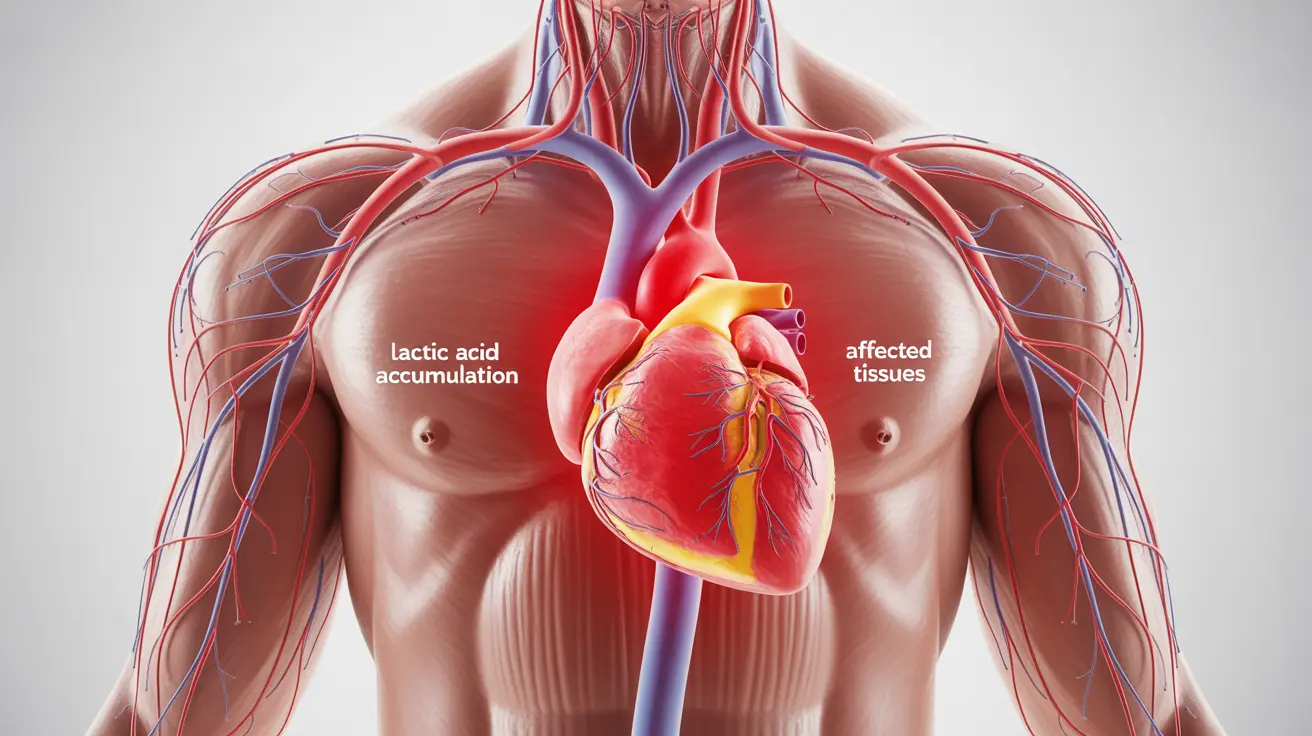Lactic acidosis is a serious medical condition that occurs when there's too much lactic acid buildup in the bloodstream. This condition can develop rapidly and requires prompt medical attention, as it may indicate underlying health issues or serious complications. Understanding the symptoms and causes of lactic acidosis is crucial for early detection and treatment.
While this condition can affect anyone, certain factors increase your risk, including intense physical activity, specific medications, and various medical conditions. Learning to recognize the warning signs could potentially save your life or help you seek treatment before the condition becomes severe.
Key Symptoms of Lactic Acidosis
The symptoms of lactic acidosis can range from mild to severe and may develop gradually or suddenly. Common warning signs include:
- Severe fatigue and weakness
- Muscle pain or cramping
- Rapid or difficult breathing
- Nausea and vomiting
- Abdominal pain
- Irregular or rapid heartbeat
- Mental confusion or disorientation
If you experience multiple symptoms, especially after intense exercise or if you have underlying health conditions, seek immediate medical attention.
Common Causes and Risk Factors
Medical Conditions
Several underlying health conditions can contribute to lactic acidosis:
- Severe infections or sepsis
- Heart or liver disease
- Diabetes
- Cancer
- HIV/AIDS
- Respiratory failure
Medications and Substances
Certain medications and substances may increase your risk of developing lactic acidosis:
- Metformin (diabetes medication)
- Nucleoside reverse transcriptase inhibitors (HIV medications)
- Excessive alcohol consumption
- Some asthma medications
Diagnosis and Treatment Approaches
Healthcare providers diagnose lactic acidosis through various methods:
- Blood tests to measure lactic acid levels
- Arterial blood gas analysis
- Complete metabolic panel
- Physical examination
- Review of medical history and symptoms
Treatment typically focuses on addressing the underlying cause and may include:
- Intravenous fluids
- Oxygen therapy
- Medication adjustments
- Treatment of underlying infections or conditions
- Temporary discontinuation of contributing medications
Prevention and Management Strategies
While not all cases of lactic acidosis are preventable, certain steps can help reduce your risk:
- Monitor exercise intensity and stay properly hydrated
- Follow medication instructions carefully
- Maintain regular check-ups if you have underlying conditions
- Report concerning symptoms to your healthcare provider promptly
- Stay informed about medication side effects
Frequently Asked Questions
What are the common symptoms of lactic acidosis that I should watch for? The most common symptoms include severe fatigue, muscle pain, rapid breathing, nausea, vomiting, abdominal pain, irregular heartbeat, and mental confusion. These symptoms may appear suddenly or develop gradually.
What medical conditions and medications can cause lactic acidosis? Medical conditions that can cause lactic acidosis include severe infections, heart or liver disease, diabetes, cancer, and HIV/AIDS. Medications that may contribute include metformin, certain HIV medications, and some asthma treatments.
How is lactic acidosis diagnosed and treated in a hospital setting? Diagnosis involves blood tests, arterial blood gas analysis, and physical examination. Treatment typically includes IV fluids, oxygen therapy, and addressing the underlying cause. Monitoring in a hospital setting allows for immediate intervention if needed.
Can intense exercise cause lactic acidosis, and how can it be managed at home? Yes, intense exercise can lead to temporary lactic acid buildup. Management includes proper hydration, gradual exercise progression, and adequate rest periods. However, severe symptoms require immediate medical attention.
What are the potential complications of untreated lactic acidosis? Untreated lactic acidosis can lead to serious complications including organ failure, shock, and in severe cases, death. Early recognition and prompt medical treatment are essential for preventing these complications.




